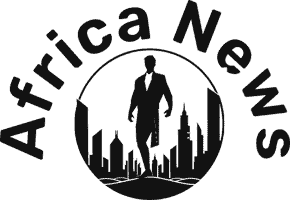in a thought-provoking name to motion, a number one fitness recommend has instructed African international locations to severely re-examine their dependency on investment from the USA. This enchantment comes amidst ongoing discussions surrounding lasting fitness projects and the will for greater self-reliance within the continent’s fitness sector.The statement, featured in Analysis Skilled Information, highlights the complexities of international assist and its implications on native fitness methods in Africa. As international locations navigate the demanding situations posed through moving world dynamics and attainable discounts in exterior monetary beef up, the will for leading edge, homegrown answers hasn’t ever been extra urgent. This text delves into the insights of the fitness chief, inspecting the interaction between exterior investment and the search for autonomy in attaining long-term public fitness objectives around the continent.
Africa’s Dependence on US Investment for Well being Tasks
A rising fear amongst fitness professionals is the increasingly more precarious nature of Africa’s fitness investment construction, which has closely relied at the U.s.a.. Whilst US investments have made vital contributions to more than a few fitness projects, there’s a urgent want for African international locations to discover choice financing fashions. Reliance on exterior investment can create vulnerabilities, because it continuously ends up in fluctuations in program sustainability, particularly amid shifting political landscapes in donor international locations. This dependency dangers stifling native innovation and self-sufficiency, a very powerful parts for a strong fitness device.
To foster higher autonomy and resilience, African international locations should purpose to diversify their investment resources and determine robust public-private partnerships. Doable methods come with:
- Expanding native earnings technology: enforcing or improving fitness taxes can give a extra solid basis.
- Enticing in world collaborations: searching for partnerships with different international locations or organizations to proportion assets and experience.
- Accelerating grassroots fitness projects: Empowering native communities to broaden and organize their fitness initiatives can toughen effectiveness and possession.
Additionally, the desk underneath illustrates the percentage of fitness investment sourced from other avenues in make a choice African international locations:
| Nation | US Investment (%) | Native Investment (%) | Global Partnerships (%) |
|---|---|---|---|
| Kenya | 30 | 50 | 20 |
| Nigeria | 40 | 35 | 25 |
| South Africa | 20 | 60 | 20 |
By means of taking proactive measures and rethinking their investment methods, african international locations can construct a more fit long term, supplied with the assets important to take on rising fitness demanding situations independently.

The Case for Sustainable Well being Investment in Africa
The dialog round fitness investment in Africa has reached a essential juncture. As world dynamics shift, many professionals argue that African international locations should domesticate self-reliance quite than rely predominantly on exterior resources, specifically U.S.investment. This modification isn’t simply an issue of economic necessity; it aligns with broader tendencies in opposition to sustainable development and resilience in opposition to exterior shocks.For native fitness methods to thrive, international locations will have to prioritize investments in:
- Home useful resource mobilization: Leveraging native taxation and public-private partnerships.
- Capability construction: Coaching fitness pros to cut back mind drain and make stronger native care.
- Cutting edge financing fashions: Exploring social have an effect on bonds and micro-financing for fitness projects.
Additionally, diversifying investment resources can bolster fitness methods through making a extra powerful infrastructure that isn’t overly reliant on international help. Sustainable investment mechanisms allow international locations to tailor their fitness methods to native wishes, thereby improving potency and effectiveness. A collaborative way involving governments, non-profits, and the non-public sector can foster this financial independence. let’s say the possibility of self-sustaining fitness methods in Africa, believe the next comparability:
| Investment Supply | Affect on Well being Techniques |
|---|---|
| U.S. Investment | Brief-term assist, attainable dependency |
| Home Investment | Lengthy-term sustainability, adapted responses |
| Public-Non-public Partnerships | Innovation, shared chance |

Cutting edge Answers: Diversifying Monetary Improve for Healthcare
Within the face of accelerating world fitness demanding situations, African international locations are exploring plenty of monetary methods to protected their healthcare methods. A reliance on conventional investment resources, specifically from the USA and different Western international locations, is now not sustainable as financial and political climates shift. Stakeholders within the fitness sector are advocating for a extra layered strategy to investment that comes with:
- Public-Non-public Partnerships (PPPs): By means of participating with deepest entities, governments can leverage investments that at once cope with healthcare wishes.
- Cutting edge Financing mechanisms: Tools corresponding to social have an effect on bonds and health-oriented micro-financing can open up new channels for funding.
- Native Philanthropy: Enticing rich people and organizations inside Africa to beef up fitness projects can cut back dependency on exterior assist.
- Regional Collaborations: International locations can pool assets and experience to take on shared fitness demanding situations extra successfully.
Moreover, adapting native fitness markets to include technology-driven answers can considerably toughen potency and useful resource allocation. As an example, telemedicine and mobile health applications no longer most effective expand get entry to however too can lend a hand allocate price range extra successfully through minimizing overhead prices. The next desk illustrates attainable expertise projects that may diversify investment resources:
| Generation Initiative | Doable have an effect on |
|---|---|
| Telemedicine Products and services | Greater get entry to to healthcare in far flung spaces |
| Cell Well being Programs | progressed affected person tracking and engagement |
| Well being Knowledge Analytics | Enhanced decision-making for fitness useful resource allocation |
| Blockchain for Well being Data | Greater safety and potency in clinical record-keeping |

Bridging the Hole: Strengthening Native Well being Techniques
As fitness demanding situations evolve around the African continent, the decision for international locations to broaden powerful, self-reliant fitness methods turns into increasingly more crucial. Mavens argue that quite than relying closely on investment from the USA, native governments should center of attention at the following methods to protected their public fitness futures:
- Funding in Native Healthcare Infrastructure: Improving amenities, apparatus, and expertise at native ranges can considerably make stronger provider supply.
- Coaching and Retention of Healthcare Employees: Making sure that healthcare pros are well-trained and incentivized to stay of their house international locations is a very powerful.
- Neighborhood Engagement: Actively involving native populations in health initiatives fosters trust and improves fitness results.
By means of prioritizing those spaces, African international locations can create more potent fitness methods which can be higher supplied to deal with each present and long term demanding situations. Moreover, collaborative efforts—together with partnerships amongst governments, ngos, and personal sectors—can additional toughen useful resource pooling and data sharing. This collaborative model may also be exemplified through the next desk, which highlights completed projects:
| Initiative | Nation | Affect |
|---|---|---|
| Neighborhood Well being Employee Program | Kenya | Greater get entry to to maternal fitness services and products |
| native Vaccine Manufacturing | South Africa | Diminished dependency on imports |
| Telemedicine Enlargement | Nigeria | Progressed healthcare get entry to in rural spaces |

Management Views: The Function of African Governments in Investment methods
Fresh discussions amongst African fitness leaders have emphasised a essential shift in investment methods that would grow to be the continent’s healthcare panorama. Slightly than proceeding to lean closely on conventional donors, which often sufficient include strings hooked up, there’s a robust name for African governments to innovate and leverage inside assets. This paradigm shift no longer most effective aligns with the rising sentiment of self-sufficiency but in addition encourages the improvement of sustainable investment mechanisms. Key concerns for this transition come with:
- Diversifying investment resources: Exploring public-private partnerships and native philanthropic channels.
- Expanding home funding: Allocating a better proportion of nationwide budgets to healthcare.
- Improving transparency and duty: Construction agree with with stakeholders via open reporting and measurable results.
Moreover, the function of African governments extends past mere investment; they should additionally spearhead projects that toughen native capability for fitness provider supply. This comes to fostering innovation via expertise, supporting healthcare infrastructure, and prioritizing schooling and coaching for healthcare pros. Collaborative platforms that allow sharing of best possible practices amongst international locations can enlarge those efforts. The desk underneath highlights some a hit investment fashions discovered around the continent that illustrate this modern way:
| Nation | Investment Type | Consequence |
|---|---|---|
| Kenya | Public-Non-public Partnerships | Progressed maternal fitness services and products get entry to |
| Rwanda | Neighborhood Well being Insurance coverage | Greater protection and native participation |
| South Africa | Tax Incentives for Well being NGOs | Enhanced provider supply through non-profits |

Collaborative Approaches: Enticing International Partnerships for fitness Development
In a panorama increasingly more characterised through world fitness demanding situations, collaborative approaches are crucial for empowering communities throughout Africa. Well being methods should transition from a heavy dependence on US investment to varied partnerships that surround a much wider array of stakeholders. By means of attractive organizations from each the private and non-private sectors, native communities can tailor their fitness methods to suit regional wishes extra successfully. This shift calls for leading edge frameworks and new fashions of investment that prioritize sustainable expansion and self-reliance in fitness projects.
such partnerships can leverage shared experience and assets. Enticing native governments, NGOs, instructional establishments, and companies can foster an atmosphere of collective problem-solving. Believe the next parts a very powerful to organising powerful world partnerships:
- Shared Imaginative and prescient: Align goals between native and world entities.
- Useful resource Mobilization: Pooling price range and experience to deal with urgent fitness problems.
- Capability Construction: Coaching native fitness staff to toughen provider supply.
- Wisdom Sharing: Developing platforms for exchanging best possible practices and analysis findings.
By means of embracing those parts, African international locations can domesticate resilience of their fitness methods and cut back the limitations imposed through exterior investment resources.A strategic pivot in opposition to inclusive partnerships isn’t simply a problem however a possibility for transformative expansion.

The Means Ahead
the decision for African international locations to re-examine their dependence on U.S. investment for fitness projects displays a rising reputation of the will for sustainable, homegrown answers to public fitness demanding situations. As discussions proceed inside the continent’s management and amongst fitness professionals, the emphasis on fostering higher self-reliance and leading edge financing mechanisms would possibly pave the way in which for extra resilient fitness methods. This shift no longer most effective objectives to empower African international locations to raised organize fitness crises independently but in addition to create a extra equitable world fitness panorama. As policymakers functional on those essential problems, it stays crucial to strike a stability between world beef up and native governance, making sure that the way forward for fitness in Africa is outlined through company and resilience.
Source link : https://afric.news/2025/03/13/africa-must-rethink-reliance-on-us-funding-says-health-leader-research-professional-news/
Creator : Olivia Williams
Put up date : 2025-03-13 22:32:00
Copyright for syndicated content material belongs to the connected Source.



